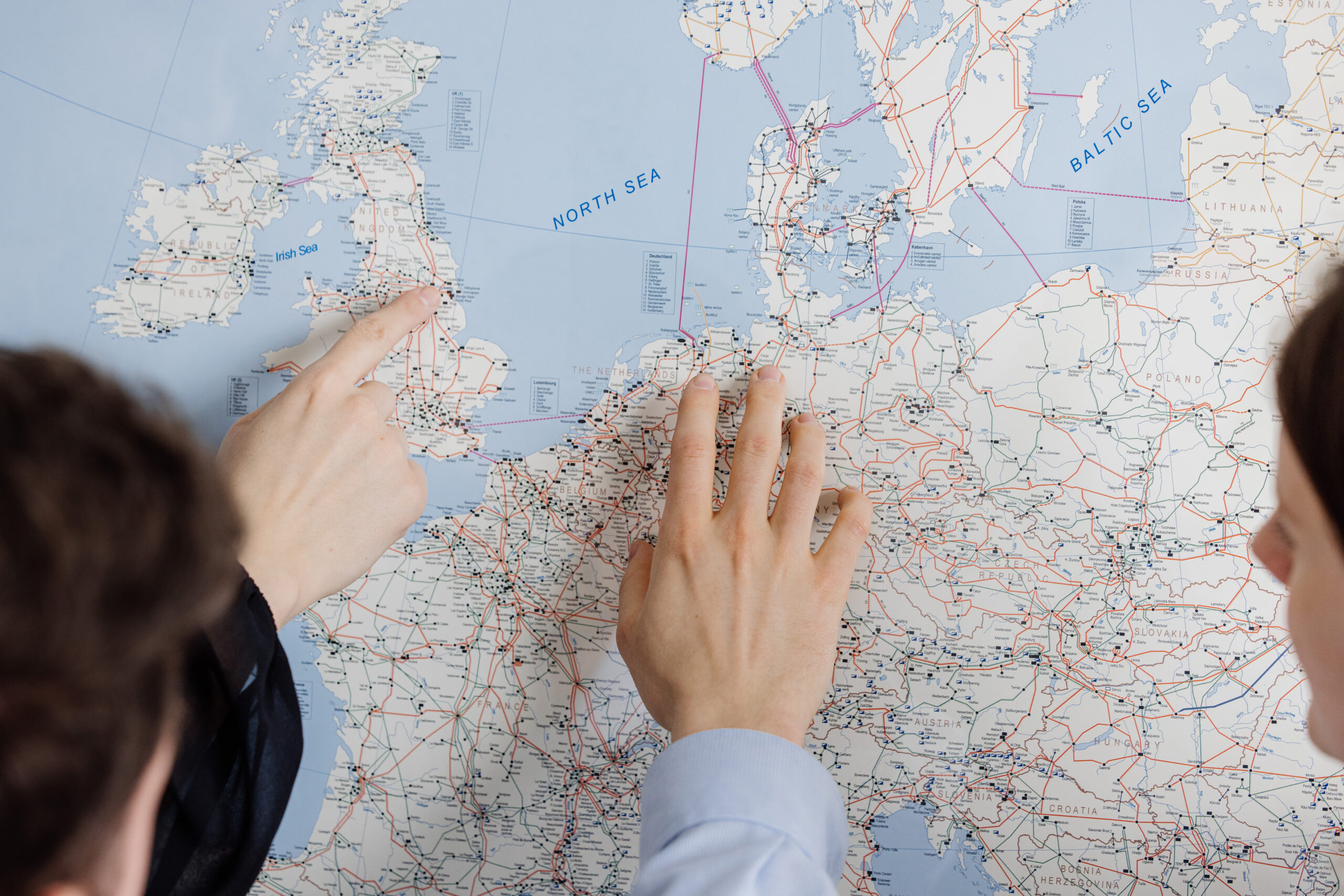Kategorie: ‘Allgemein’
Prof Leonhardt admitted to the National Academy of Science and Engineering
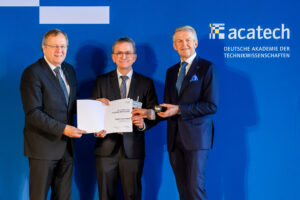
acatech
Berlin, 15.10.2024
Foto: ©Svea Pietschmann
On 10 October 2023, Prof. Leonhardt was admitted to the National Academy of Science and Engineering together with 38 other leading scientists.
On the occasion of the General Assembly and the acatech ceremony 2024 in Berlin, he was now able to receive his membership certificate.
Acatech is an association of elected experts dedicated to providing independent, fact-based and public interest-oriented advice to policymakers and society. Its aim is to promote sustainable growth through innovation.
We congratulate him on taking up this important honorary position.
‘Colloquium Biomedical Engineering and Related Fields’ – Invitation to the current lecture
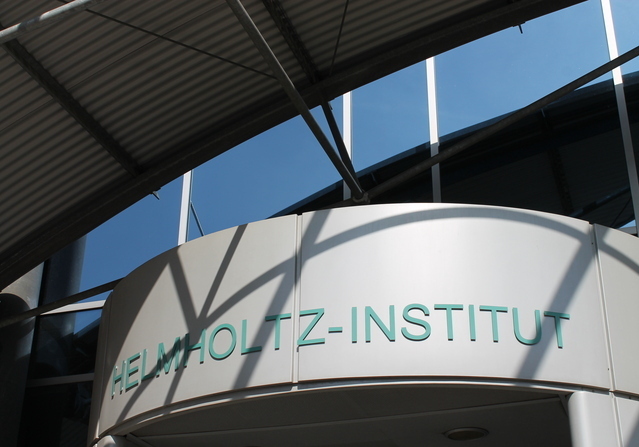
The lecture, entitled ‘Electrical impedance of muscle: from muscular dystrophy to Mars’, will be moderated by Professor Steffen Leonhardt, Chair holder of the Medical Information Technology (MedIT) at the Helmholtz Institute for Biomedical Engineering at RWTH Aachen University, on Wednesday, 25 September 2024.
In his presentation, Dr Seward B. Rutkove, Nancy Lurie Marks Professor of Neurology, Harvard Medical School Chair, Department of Neurology, Beth Israel Deaconess Medical Center, will talk about innovations in the field of skeletal muscle electrical impedance. His lecture will focus on primary disorders that impact muscle, including muscular dystrophies, amyotrophic lateral sclerosis, muscle injury and the effects of unloading, such as those caused by microgravity or partial gravity. He will then discuss methods and technologies for measurement, and review the data collected in a wide range of conditions in both human and animal models.
„It is necessary to clarify which analytical approaches are currently available and in which direction future research will go“,
indicates Dr Rutkove in his abstract, setting the scene for the discussion that will follow.
The ‘Colloquium on Biomedical Engineering and Related Areas’ is a regular series of events organised by RWTH Aachen University. The objective of the series is to facilitate interdisciplinary education in these fields and to encourage the interdisciplinary exchange of ideas.
A cordial invitation is extended to all students, clinicians, engineers and scientists to attend this illuminating lecture and engage in discourse with experts in the field of biomedical engineering.
The event will take place from 5 to 5:45 pm at the Helmholtz Institute for Biomedical Engineering at RWTH Aachen University, Pauwelsstraße 20, 52074 Aachen, Germany, seminar room 2.70. It will be coordinated by Prof. Dr. Klaus Radermacher, Chair of Medical Engineering, RWTH Aachen University. For further information please contact the secretariat at meditec@hia.rwth-aachen.de or call +49-(0)241-80 23870.
Who run the work? – Team ÜEW
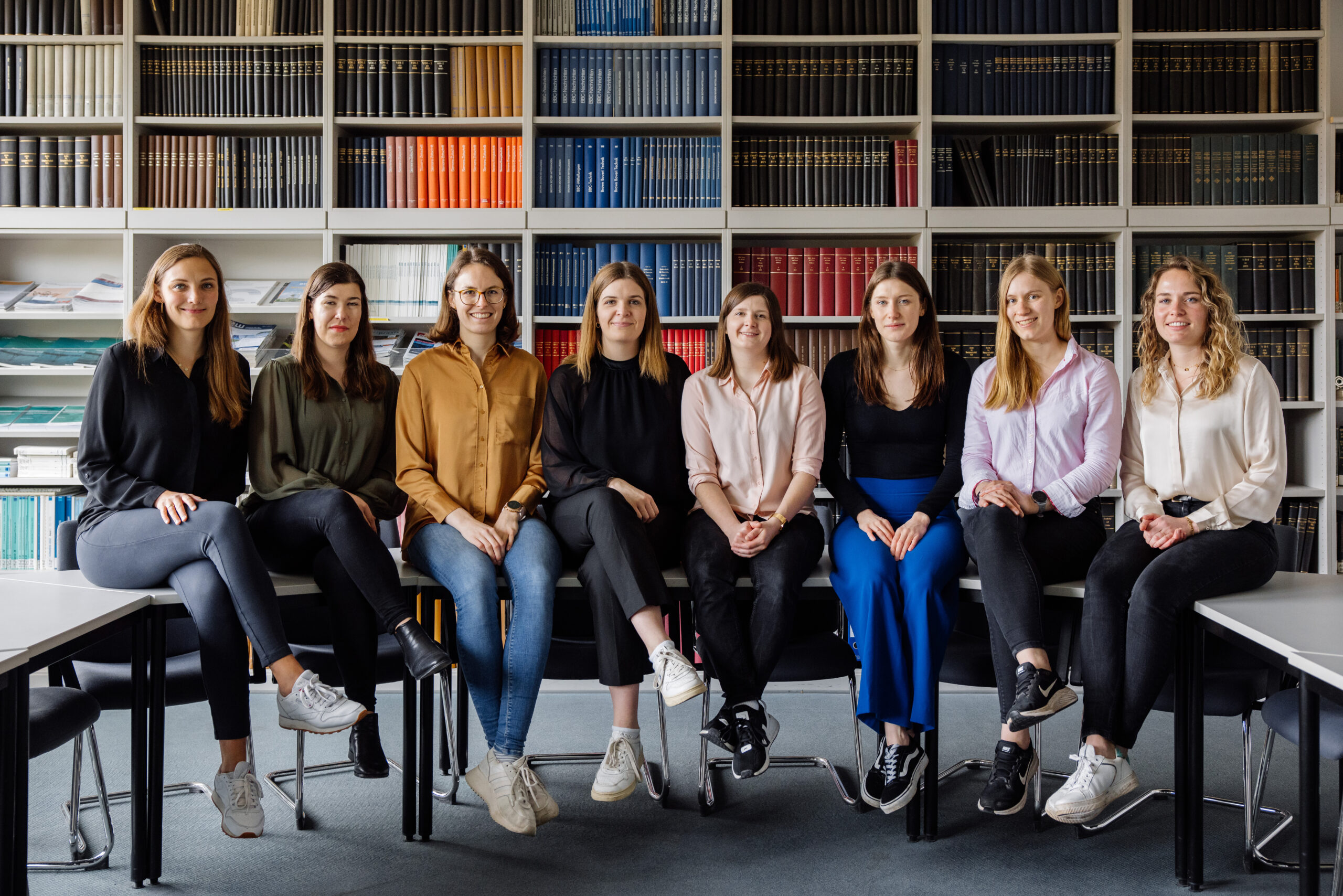
From left: Stefanie Samaan, Ricarda Kriete, Carolin Guntermann, Sophia Tepe, Lina Fischer, Muriel Krüger, Jana Einsiedle, Claire Lambriex ©Martin Braun
A look at the team from the chair of Transmission Grids and Energy Economics at the Institute of High Voltage Equipment and Grids, Digitalization and Energy Economics (IAEW) presents a pleasing picture for the field of electrical engineering: almost a third of its researchers are female.
The share of women in engineering has increased in recent years, and female engineers are a natural part of an institute team. All of the female researchers in the team have completed a degree in the field of electrical engineering and then decided to complete a doctorate at the university and start their professional career here. Of course, working in electrical engineering requires a certain interest in science and technology, but the key to success and fun is usually the curiosity to understand new things.
We are always motivated by the question: ‘How does this work?’, says Lina Fischer, who is researching a robust planning model for the future energy system.
The next step is simply to have the bravery to actively pursue these questions – even if it means venturing into the unknown.
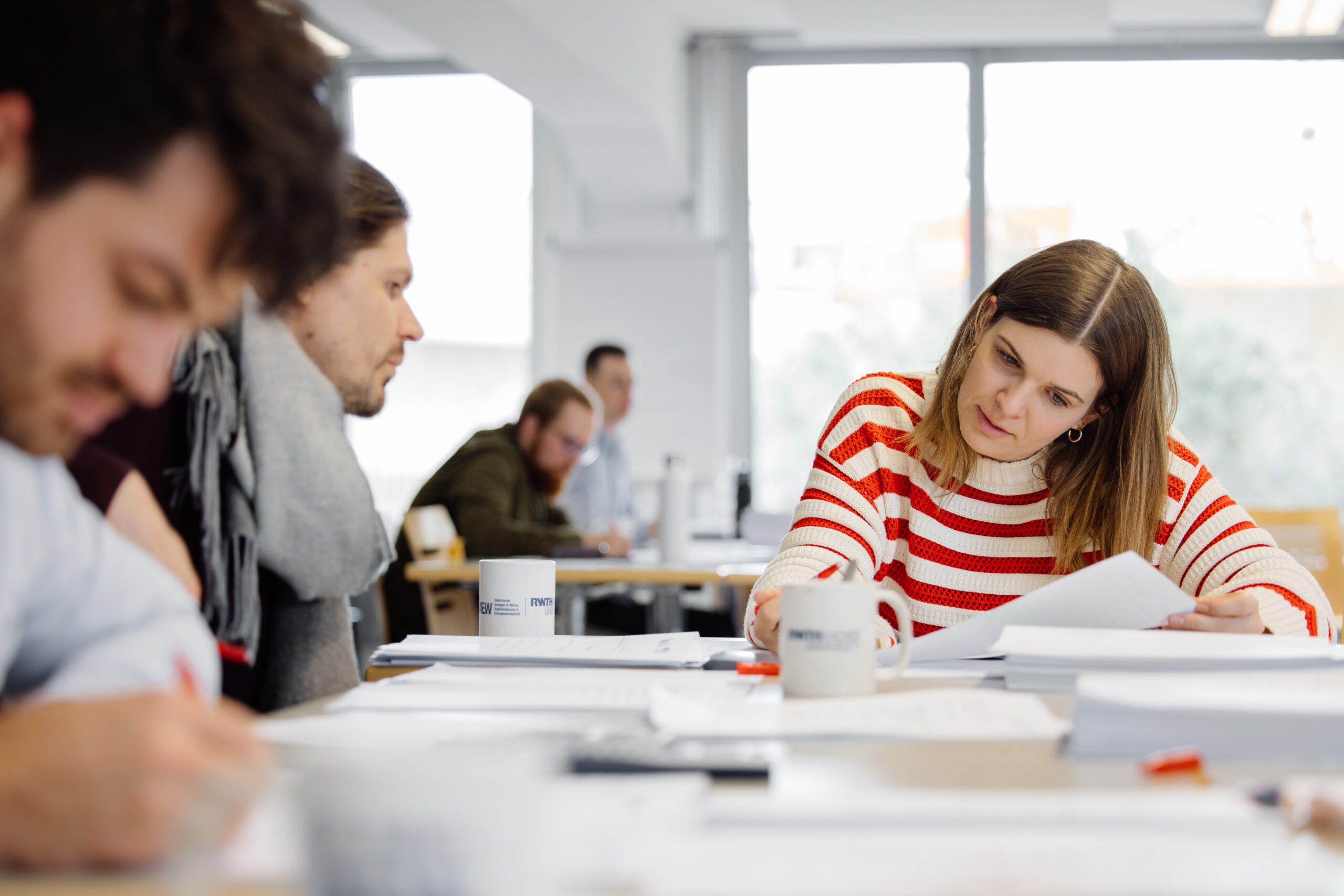
© Martin Braun
Everyone at the IAEW is driven by the vision of researching and developing solutions for the energy transition. The work at the chair of Transmission Grids and Energy Economics is primarily focusing the question:
„How should we design the future energy system so that it is environmentally friendly, reliable and economically efficient?“
This covers a wide range of interesting aspects. For example, lot of research is done on how the large amounts of energy from photovoltaic and wind energy plants, as well as alternative energy sources such as hydrogen, can be integrated into the current energy system. The transmission grid for electricity is essential for this. It can be seen in everyday life, for example, by the high-voltage power lines running alongside the freeways. The transmission grid enables electricity transport over long distances and thus the transport of large amounts of energy from wind turbines in northern Germany to regions with high electricity consumption. Current projects at the chair are investigating how the transmission grid needs to be expanded and operated in the future in order to facilitate the energy transition. Research is also ongoing in determining the locations where power lines to offshore wind turbines in the North and Baltic Seas should be connected to the grid or where large electrolysis plants for the production of hydrogen should be positioned. In addition to the technical aspects of the components, these studies must also take economic aspects into account, such as the costs arising from investments or possible congestions in the transmission grid.
In general, the consideration of economic and market aspects plays a major role in the transformation of the energy system. European efforts to further strengthen electricity trading between the individual countries are leading to increasing electricity exchanges in Europe and thus to further challenges for the transmission grid. The chair is therefore developing methods and models to simulate the European electricity markets. In this way, various future developments can be examined and their potential impact on market participants and the transmission grid can be analyzed.
A further focus of the chair is to deal with innovative concepts that will ensure the secure and reliable operation of transmission grids in the future and thus protect against blackouts. To this end, models and processes must be developed that can represent and investigate the dynamic system behavior of transmission grids and their components under changing conditions.
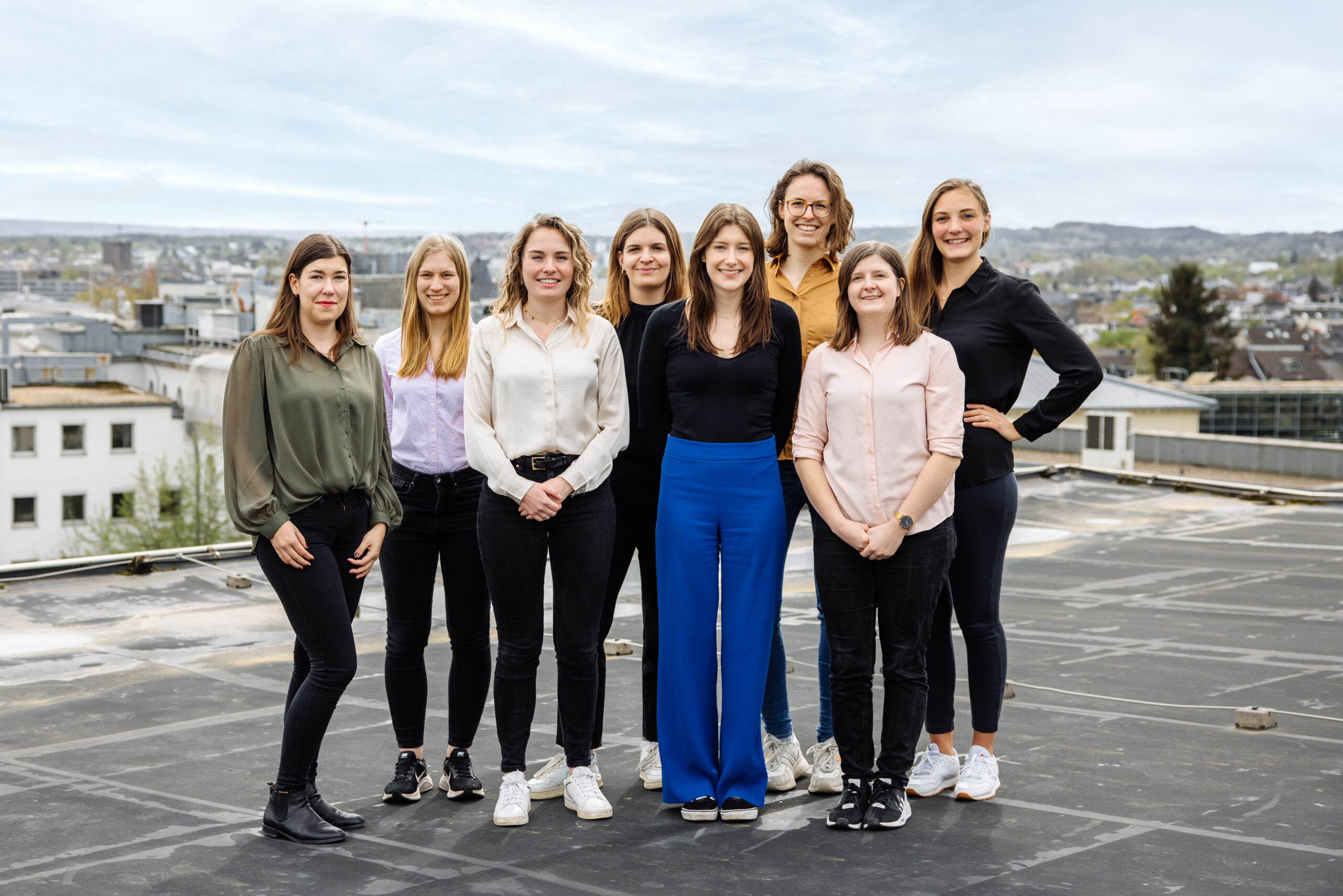
© Martin Braun
When you think of working at a university institute, your first thoughts usually revolve around working solely on your own research project. This often gives a false impression of work life at an institute, especially in the field of engineering. Work at the IAEW is characterized above all by the variety of different projects with both research and industrial partners. This allows you to get to know different topics and to gain a wide range of experience. You are often involved from the very beginning of the projects through working on them on to the presentation of the results. The different project teams make the collaboration very varied. In addition to scientific knowledge, your time at the institute gives you the opportunity to acquire a range of skills that qualify you for management positions in the industry.
Of course, you also experience many other things that make working at the institute worthwhile.
“In particular, the joint activities with other young colleagues after work, various institute traditions, parties and sporting events are all part of it.”
Notably, the IAEW also offers the opportunity to gain insight into the institute and its research topics through student assistant jobs or a thesis.
Be inspired and find your own way!
On our website we inform you about our study programmes.
Team AixSense successful in the SensUs competition 2024
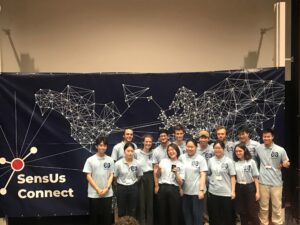
This years AixSense team at the SensUs competition 2024 ©RWTH
The RWTH team impresses with its biosensor for monitoring kidney failure
For the seventh time already, the 15 students of the AixSense team successfully took part in the SensUs competition, organised by Eindhoven University of Technology. This year, 18 teams competed against each other in the international competition with their point-of-care (PoC) biosensor solutions for the real-time detection of creatinine for monitoring acute kidney failure. The AixSense team also included 3 students from the Japanese partner university Tokyo Institute of Technology.
This year, AixSense won three out of five categories with its PoC and also took second place in the technological innovation and technical feasibility categories. Particularly noteworthy is the performance in the area of public relations and scientific communication: the team from Aachen received the Vlog Award for their video diary and AixSense also won the public voting for the Public Inspirations Award.
The Institute for Materials in Electrical Engineering 1 at RWTH Aachen University has been involved in the competition since 2018. Every year, Professor Sven Ingebrandt and Dr. Vivek Pachauri put together a team from various degree programmes. The team is supported by various structures and profile areas at RWTH, such as the Lab center for micro and nanotechnology (ZMNT), which advises the team on technical issues.
The annual competition encourages international and interdisciplinary collaboration in fields such as electrical engineering and micro-nanotechnology, transformative materials, biology, engineering and medical sciences, among others.
Interested parties can apply for the SensUs 2025 competition at pachauri@iwe1.rwth-aachen.de until November 2024.
Visit from Professor Dr.Mohamend-Ali Belabbas
Pr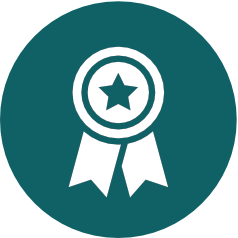 ofessor Dr. Mohamed-Ali Belabbas, this year’s winner of the ‘Friedrich Wilhelm Bessel Research Award’ from the Alexander von Humboldt Foundation, is visiting the Chair of Intelligent Control Systems during August.
ofessor Dr. Mohamed-Ali Belabbas, this year’s winner of the ‘Friedrich Wilhelm Bessel Research Award’ from the Alexander von Humboldt Foundation, is visiting the Chair of Intelligent Control Systems during August.
The Chair of Intelligent Control Systems will be the host during the funding period.
We congratulate the award winner and wish him a pleasant stay.
Further information on the sponsorship can be found on the website of the Alexander von Humbold Foundation.
Welcome to my work – Interview with Rebecca Rodrigo
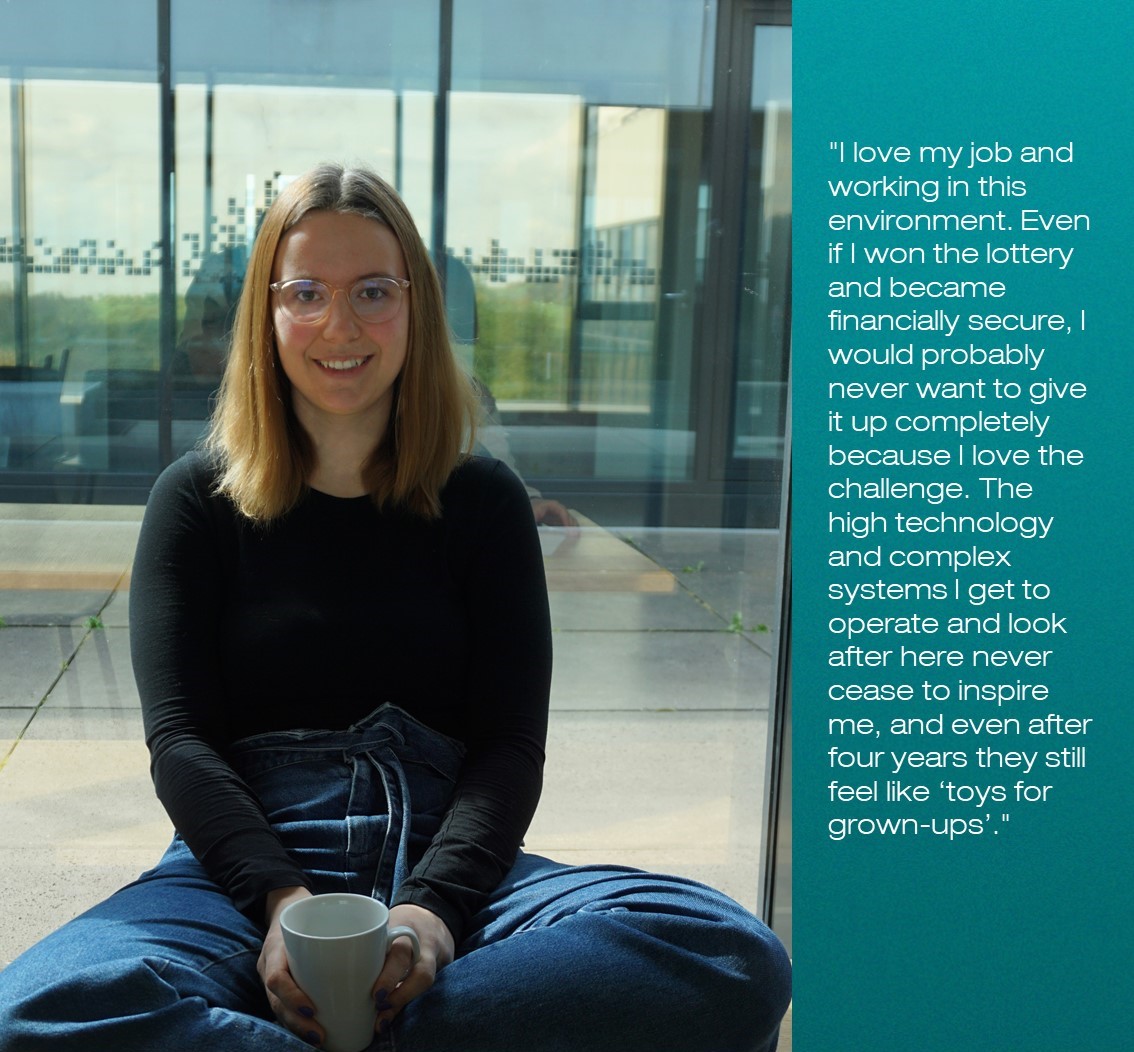
Fast, faster, the speed of light – a characteristic of modern data communication and the reason why a physicist found her way into the electrical engineering world.
Rebecca is a physicist and has been working as a cleanroom engineer at the Institute of Integrated Photonics at RWTH Aachen University since 2020. Here she gives an exclusive insight into her everyday working life.
Career guidance is often a challenge for school students. Rebecca, how did you find your way?
“Even in primary school I was very interested and enthusiastic about STEM subjects. Thanks to a dedicated and motivated physics teacher at secondary school, I decided to study physics instead of maths and physics as a teacher. I wanted to keep my options open for the future. I ‘fell in love’ with research during my bachelor’s thesis and have stayed with it ever since.”
Photonics is the technical mastery of light, which has many fascinating properties. What is photonic-electronic integration?
“Most people are familiar with electronic microchips. Integrated photonics is now concerned with implementing these functionalities on photonic microchips, where photonic signals are carried, manipulated and measured instead of electrical signals. The two microchips can also be combined or integrated to take advantage of the best features of both technologies.”
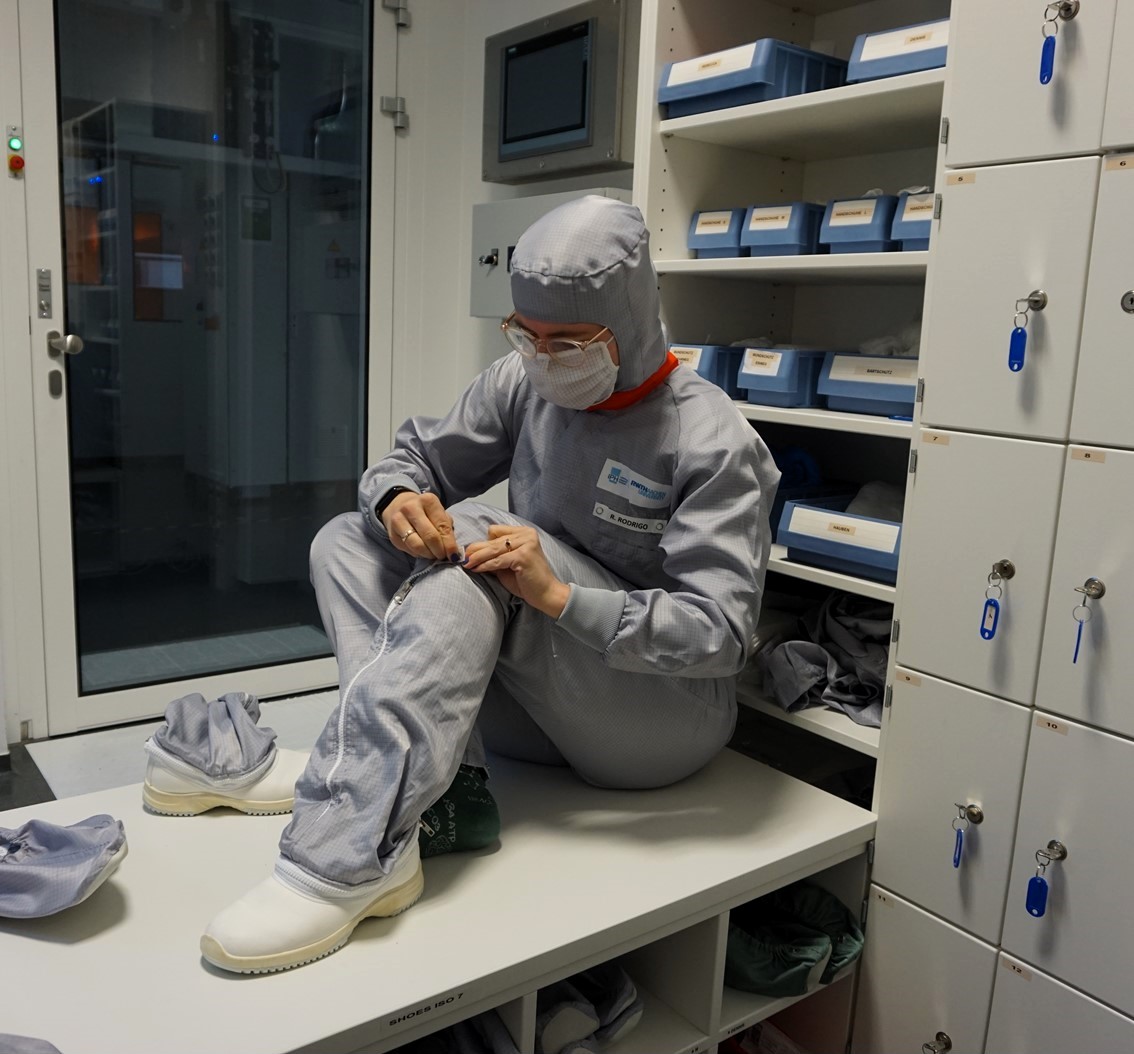
A personnel airlock leads into the cleanroom. Rebecca wears abrasion-resistant clothing to protect the ultra-sensitive microchips.
The cleanroom provides a controlled environment for specialised manufacturing processes such as the production of photonic integrated circuits on computer chips. What conditions are required in the cleanroom and why?
“The extremely low-particle environment is obviously very important, because even the smallest dust particle that gets on a microchip during the manufacturing process can affect its functionality. In our cleanroom, for example, we have only 100,000 particles larger than 0.1 micrometres per cubic metre, compared to 150 to 1000 times more in normal ambient air. The relative humidity and temperature in the cleanroom are also strictly monitored and kept constant, as the chip manufacturing processes are very sensitive.”

Rebecca works on the die-bonder using flip-chip technology: for chips to work properly, they need to be assembled and interconnected. The design and manufacture of these connections is known as packaging.
Photonic-electronic integration is a key technology for digitalisation. It meets the challenge of transporting and processing more and more data as we move towards a new information society. How exactly does this technology contribute to the solution?
“Most people are familiar with fibre optic technology from everyday life. Its advantages in data transmission lie primarily in its speed, but also in its energy efficiency compared to copper technology. We use the same principle, just miniaturised on a chip. It is no longer called fibre optics, but waveguides – but the basic principle is the same!
The advantage of photonics in data communications, whether over long distances as fibre-optic cables or miniaturised in chips for data centres, is therefore speed: we are unlikely to go faster than the speed of light in the foreseeable future. Parallelisation is also a clear advantage: different signals can be transmitted in parallel at different wavelengths or polarisations.”
What groundbreaking developments is the Institute of Integrated Photonics involved in? Which projects are you especially excited about?
“We have a lot of exciting projects and my role has the advantage that I am basically involved in all of them. There are certainly two projects that are particularly exciting in terms of these future technologies.
In the ML4Q cluster, we are involved in the development of a quantum computer. Many people are probably aware of the importance of this technology, for example in the field of quantum cryptography and supercomputing. Our specific task in this project is to realise a highly efficient photonic interface between spin qubits.
In the NeuroSys cluster, the IPH is working on a physical neural network based on photonic neurons. It is therefore a photonic AI. However, due to the size of such neural networks integrated on chips, it is not so much an AI like Chat GPT, but rather highly specialised and trained networks that score points in data centres for their enormous speed.”
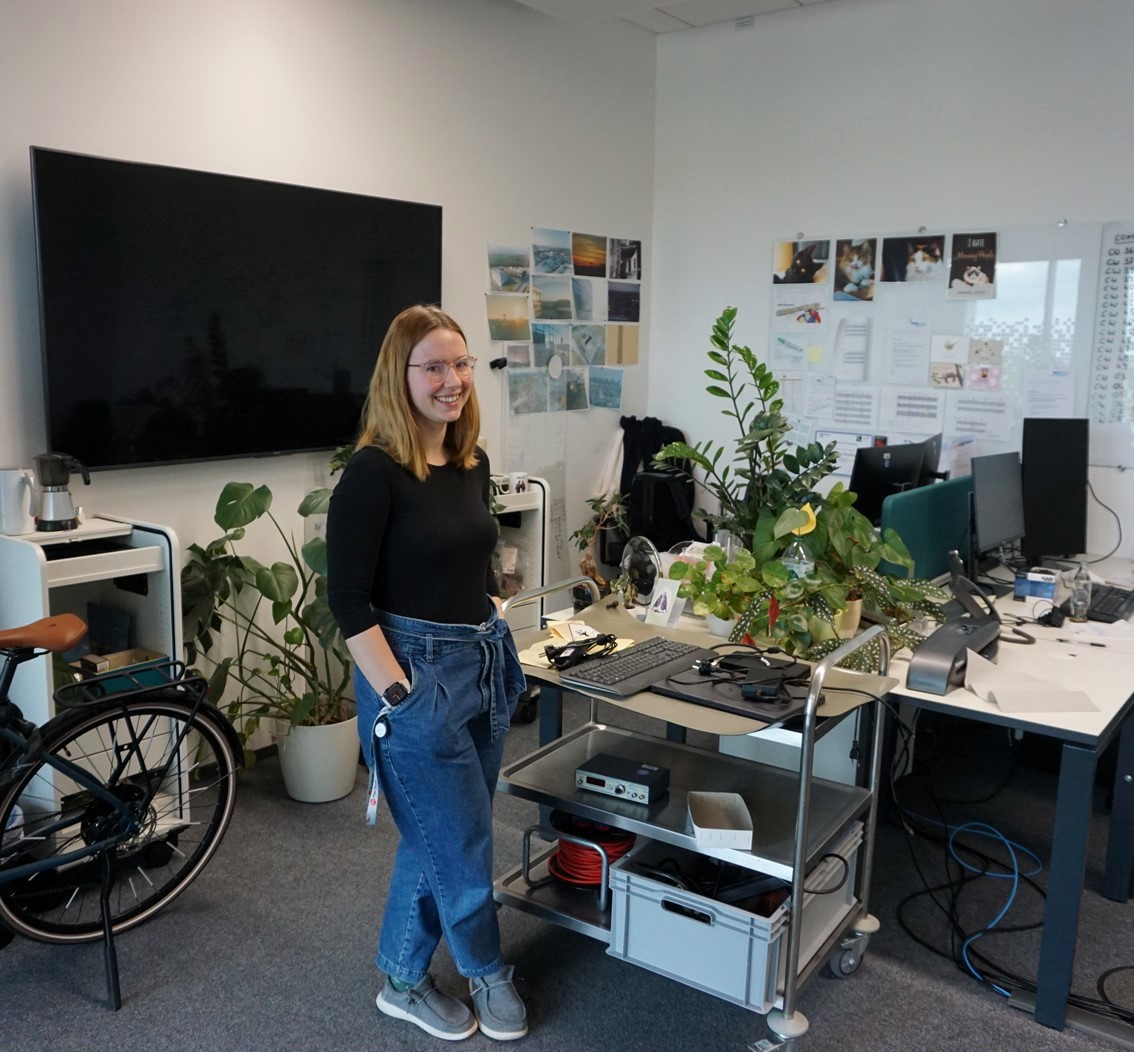
Rebecca’s office is a space for dynamic workflows and creative ideas.
What is your typical working day like?
“On a day-to-day basis, I sometimes work very application-oriented directly in chip production on the systems and also train other employees in the application. At the same time, a large part of my work consists of designing new production processes, advising my colleagues as an expert in clean room technology, scientific research and coordinating a lot of maintenance work, for example. I also have management responsibility for my small cleanroom team, which consists of one permanent employee and several students. Supervision of final theses is also part of my job.”
What does work-life balance mean to you?
“Work-life balance is very important to me. For me personally, it is really about balance. Last autumn, I had the privilege of becoming a mother to a beautiful little girl who is, of course, my world. Together with my partner, we have decided to share caring and paid work 50:50. For me, this is the perfect solution and the best of both worlds: playing and exploring with my daughter is great fun and keeps me grounded, while my job helps me to get out of the baby bubble and focus on intellectual issues.”
Are you in the process of career exploration? Stay tuned and be inspired by further insights into the working life of academics at RWTH Aachen University. Visit our website and find out more about our degree programmes.
60 Years | IKS

Prof. Dr.-Ing. Peter Jax, Head of the Institute of Communication Systems. © IKS
On 14 June 2024, the Institute of Communication Systems (IKS) celebrated its 60th anniversary.
This anniversary was celebrated together with project partners, colleagues and numerous alumni in a festive colloquium and evening event. The event provided an insight into the development of digital speech and audio communication. It was also an opportunity to look back over the past six decades and to discuss future challenges and opportunities in the field of communication systems.
“We would like to thank everyone who has supported the Institute over the past 60 years and look forward to many more successful years,” the IKS announced.
Professor Jax has led the Institute since 2015. He initiated a new name and a research focus on modern digital communication systems. Research continues to focus on speech and audio communication as probably the most important and natural link between us humans. The research deals with signal processing in communication systems, e.g. in hearing aids, hearables or immersive 3D telephony. The aim is to make digital communication systems as natural as “direct” face-to-face speech communication. Both model-based digital signal processing and machine learning methods are used in innovative hybrid solutions.
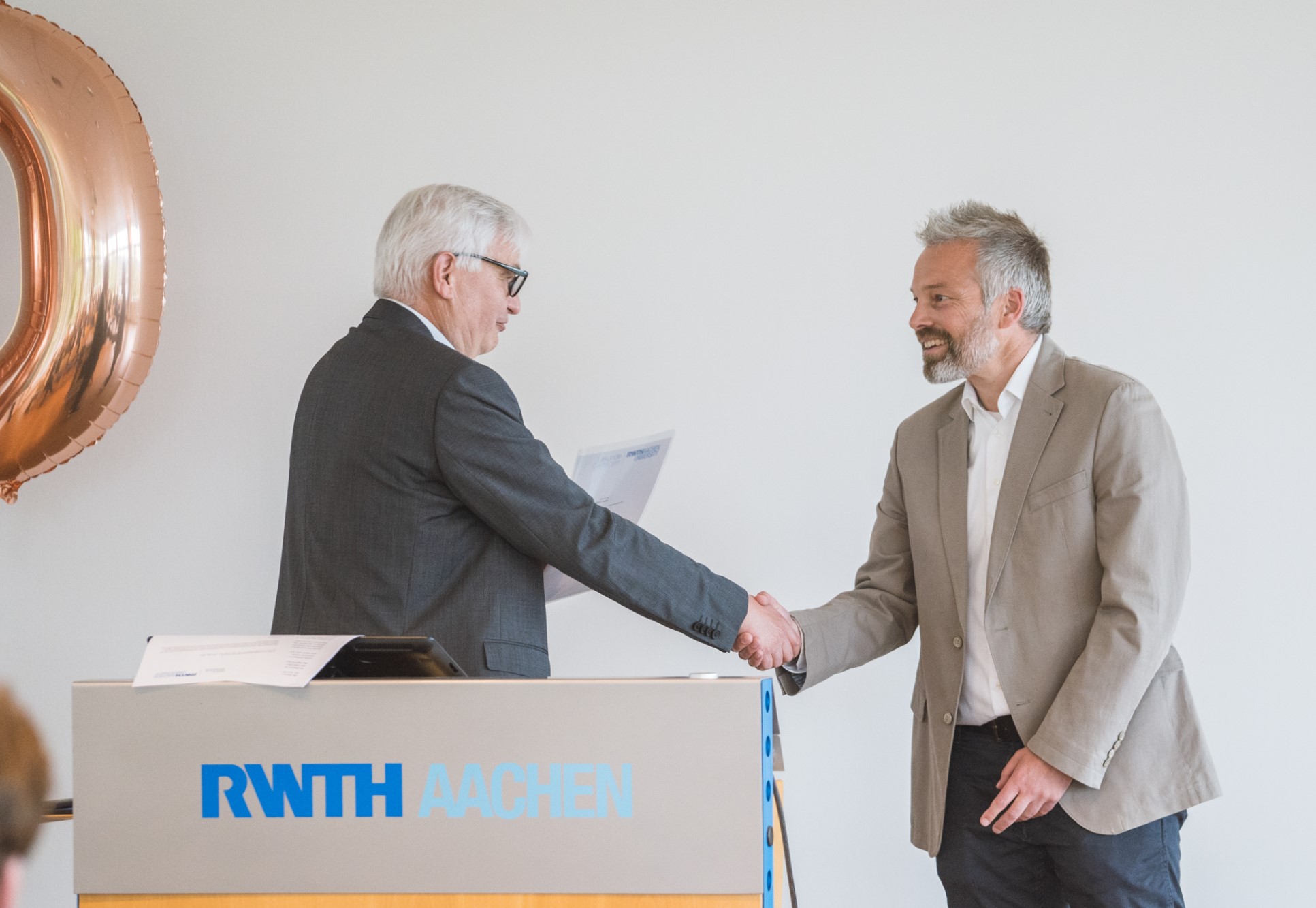
Prof. Dr.-Ing. Albert Moser, Dean of the Faculty of Electrical Engineering and Information Technology and Prof. Dr.-Ing. Marc Adrat, Research Group Manager for Software Defined Radio (SDR) at the Fraunhofer Institute for Communication, Information Processing and Ergonomics (FKIE) in Wachtberg and lecturer at the IKS at RWTH Aachen University. © IKS
One of the highlights of the event was the formal appointment of Marc Adrat as Honorary Professor. He is an internationally recognized expert in the field of Software Defined Radio, which involves programmable digital radio systems where essential transmission functions such as coding, error correction, modulation, and synchronization are implemented via software. His teaching activities focus on modern error-correcting channel coding in the course „Modern Channel Coding for Wireless Communications“, which is offered as part of the regular „Master’s programme in Electrical Engineering and Information Technology“.
“His expertise and commitment will undoubtedly continue to have a significant impact on the quality of our teaching and research,” stated the IKS.
The appointment will also strengthen the collaboration between the Faculty of Electrical Engineering and Information Technology and the Fraunhofer Institute for Communication, Information Processing and Ergonomics.
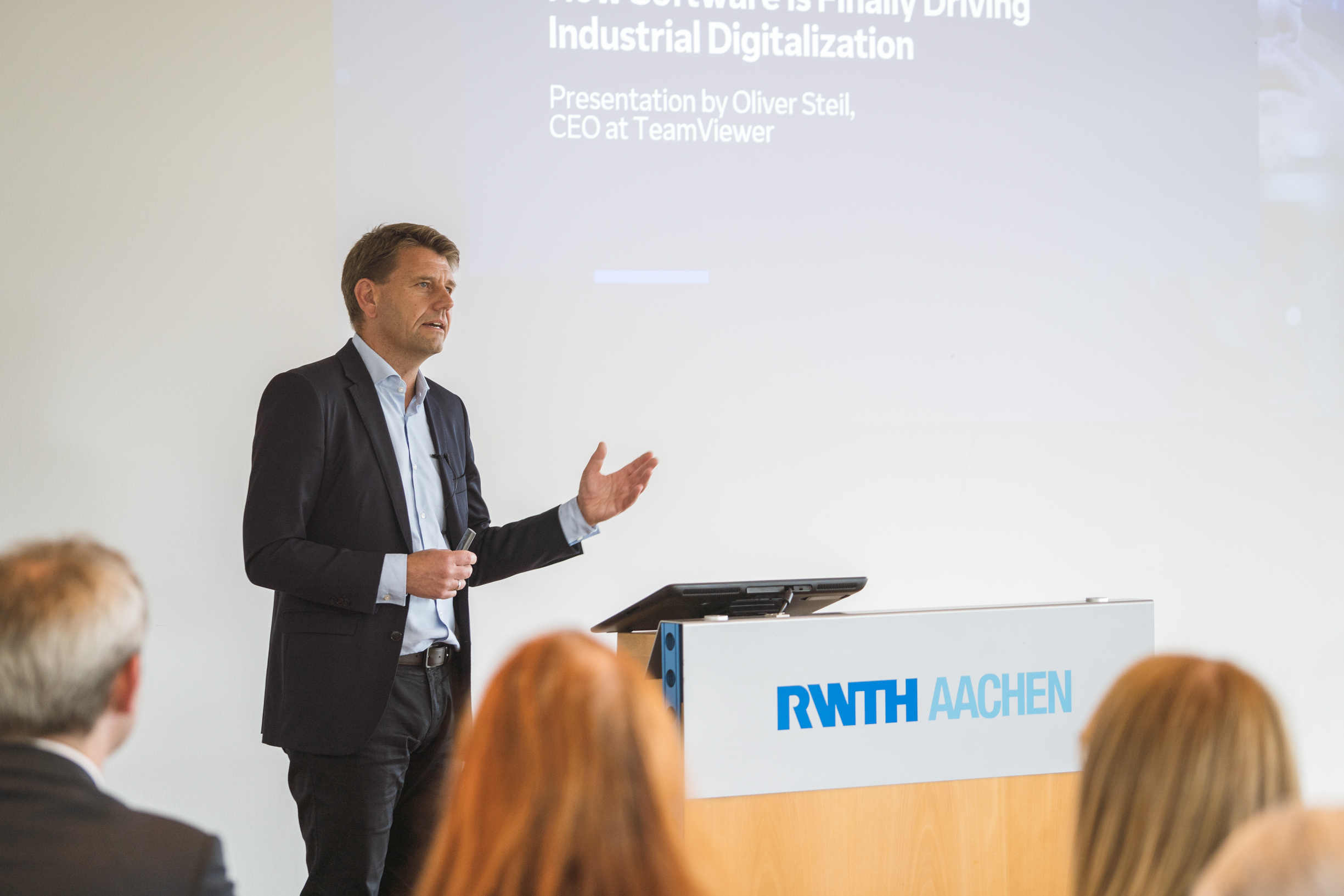
Oliver Steil, former employee of the IKS and current CEO of TeamViewer. © IKS
Another highlight was Oliver Steil’s presentation entitled “Digital Twins, AI, Spatial Computing, et al. – How Software is Finally Driving Industrial Digitalization”. He also spoke about his personal career, which is rooted in the Institute and ultimately led Oliver Steil to his current position as CEO of TeamViewer. The guest of honour provided fascinating insights into the challenges and opportunities of leading a global technology company.
The presentation ended with a lively question and answer session, where attendees had the opportunity to speak directly to Oliver Steil. Questions ranged from specific technical aspects to strategic considerations.

© IKS
Further information can be found on the homepage of the Institute of Communication Systems.
WirtschaftsWoche University Ranking 2024 confirms excellent reputation in the business world
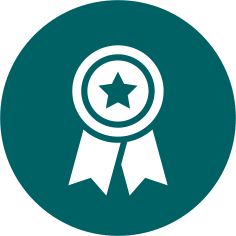
Electrical engineering graduates will have excellent career opportunities in the coming years. But where can prospective students expect the best education?
The consulting firm Universum asked 483 corporate recruiters which university best prepares its graduates for the needs of their companies. The results confirm the outstanding role of RWTH Aachen University in research and teaching: a degree from RWTH is seen to provide optimal preparation for professional life and its associated demands on graduates. Electrical engineering at was ranked third in Germany. About one-third of the surveyed recruiters indicated that they would prioritize hiring graduates from RWTH.
New lecture in the series ‘Colloquium Biomedical Engineering and Related Fields’
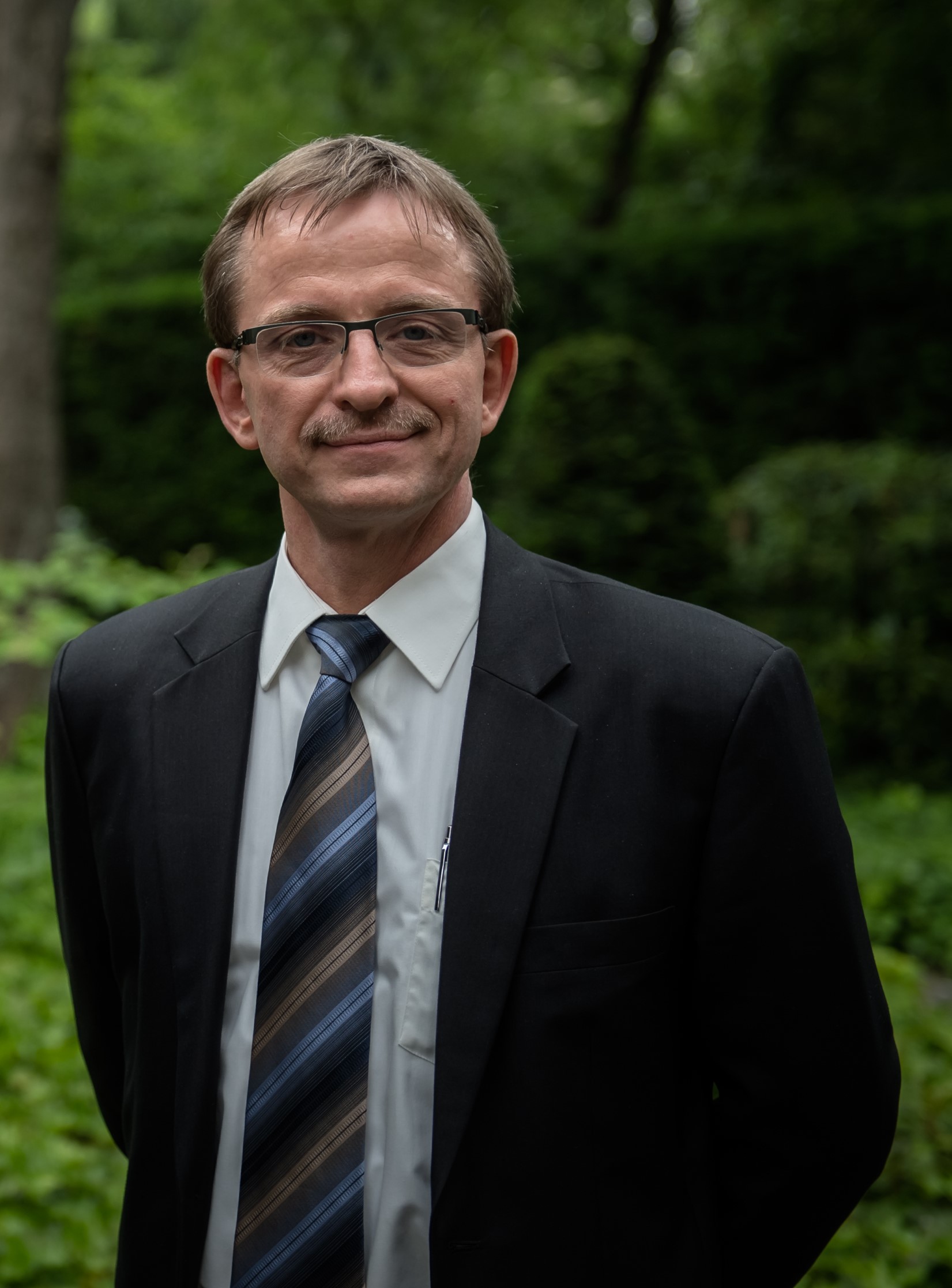
© Andreas Endermann
Professor Steffen Leonhardt, holder of the Chair of Medical Information Technology (MedIT) at the Helmholtz Institute for Biomedical Engineering at RWTH Aachen University, will moderate the new lecture: ‘Continuous In-Vehicle Health Monitoring Enabled with Multimodal Signal Fusion’ on 11 July 2024.
We are delighted to welcome Dr Joana M. Warnecke from the Peter L. Reichertz Institute for Medical Informatics at the Technical University of Braunschweig and the Hannover Medical School. Dr Warnecke will present her pioneering research into continuous health monitoring in vehicles. Her work focuses on the development of a redundant sensor system that enables reliable measurement of heartbeat and respiration rate. These systems use a Convolutional Neural Network (CNN) based architecture for data fusion and take into account additional sensors such as steering wheel angle and acceleration to improve signal quality.
“Our findings indicate that over half of the driving time can be utilized for in-vehicle heartbeat and respiratory rate monitoring, highlighting the efficiency and practicality of the proposed approach,”
states Warnecke.
This technology could make a significant contribution to the early detection of cardiovascular and chronic respiratory diseases by being seamlessly integrated into everyday life.
The ‘Colloquium on Biomedical Engineering and Related Areas’ is a regular series of events organised by RWTH Aachen University. The aim of the series is to provide an interdisciplinary education in these fields and to promote the interdisciplinary exchange of ideas. All students, clinicians, engineers and scientists are invited to attend this exciting lecture and exchange ideas with experts in the field of biomedical engineering.
The event will take place from 5 to 5:45 pm at the Helmholtz Institute for Biomedical Engineering at RWTH Aachen University, Pauwelsstraße 20, 52074 Aachen, Germany, seminar room 2.70. It will be coordinated by Prof. Dr. Klaus Radermacher, Chair of Medical Engineering, RWTH Aachen University. For further information please contact the secretariat at meditec@hia.rwth-aachen.de or call +49-(0)241-80 23870.



